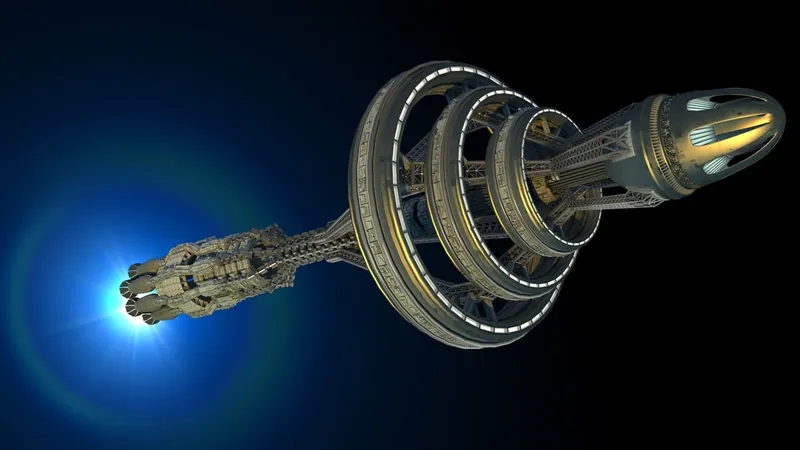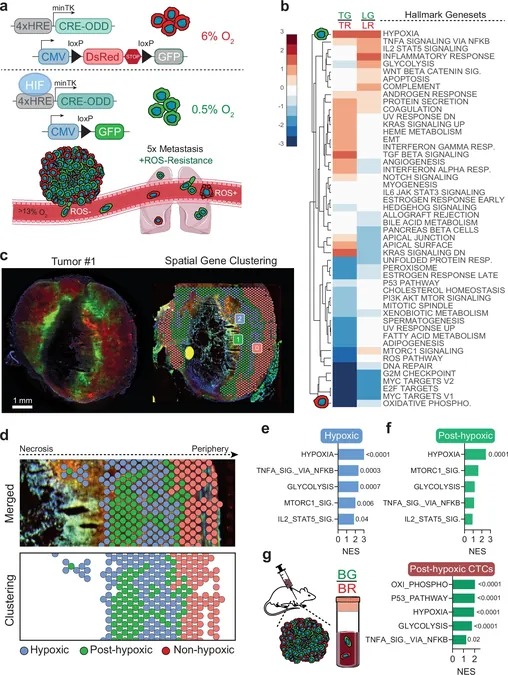
Race to the Stars: Join the Exciting Project Hyperion Generation Ship Competition!
2024-11-05
Author: Daniel
Humanity’s quest for exploration is no longer bounded by the edges of our planet. With advancements in technology, our eyes are set on the stars, hoping to reach distant worlds that may resemble our own Earth. But how do we get there, especially to a star system that could potentially harbor life?
Even with revolutionary propulsion systems expected to achieve speeds up to 10% that of light—and that remains a theoretical leap—the journey to our galactic neighbors could stretch across decades, if not centuries. Enter the innovative concept of a 'generation ship.' These speculative vessels are envisioned to sustain human life for generations, allowing churning populations to traverse the cosmic expanse toward another star.
In a bid to spark interest and ingenuity, the Project Hyperion competition has been launched, calling creative minds to submit designs for such a crewed interstellar generation ship. This ambitious project aims to evaluate whether crewed interstellar travel could be feasible with existing technology and lays the groundwork for future exploration initiatives. This is not just about the technology behind propulsion but rather about life onboard—how will humans live in a closed environment for centuries?
In this competition, teams must involve a mix of talent: at least one architectural designer, an engineer, and a social scientist. Together, they will conceptualize the architecture and societal framework for this generation ship. Participants are tasked with imagining a habitat that takes into account a variety of critical factors.
Here are the mission specifics:
Mission Duration:
The proposed journey will last 250 Earth years from launch to landing on the destination.
Target Destination:
Participants must design the habitat for a rocky planet that has been prepped for human life by a precursor probe, featuring an artificial ecosystem.
Gravity Generation:
The ship will simulate Earth’s gravity through rotation.
Environmental Conditions:
The habitat must replicate Earth-like atmospheric conditions while protecting against cosmic radiation and micro-meteoroids.
Capacity:
The ship needs to accommodate between 500 to 1500 individuals throughout the mission.
As participants embark on this imaginative exercise, they must consider essential factors that contribute to a harmonious life aboard such a ship.
Privacy:
How will the design promote personal space in such a confined environment?
Mental Health:
What architectural choices will evoke a sense of Earth-like comfort and psychological well-being?
Conflict Resolution:
What frameworks will be established to handle disputes and potential behavioral issues among inhabitants?
Intimacy and Relationships:
How will the habitat facilitate personal relationships in an enclosed space?
Social Dynamics:
How will roles and hierarchies be created and maintained on board, and what systems will support this?
Connection to Earth:
How will inhabitants stay connected to our home planet, culturally and emotionally?
The evaluation criteria will focus not only on architectural design—ensuring functional and aesthetic living spaces—but also on the technical aspects of sustaining life (including food, water, and waste recycling). Furthermore, the societal framework's ability to define cultural values and address potential challenges will be crucial.
This competition serves as a bold step toward realizing humanity's dreams of interstellar travel. As businesses, researchers, and dreamers unite under Project Hyperion, the sky isn’t the limit—it's just the beginning! What innovative solutions will emerge, and who will claim victory in this interstellar challenge? The stars await!






 Brasil (PT)
Brasil (PT)
 Canada (EN)
Canada (EN)
 Chile (ES)
Chile (ES)
 España (ES)
España (ES)
 France (FR)
France (FR)
 Hong Kong (EN)
Hong Kong (EN)
 Italia (IT)
Italia (IT)
 日本 (JA)
日本 (JA)
 Magyarország (HU)
Magyarország (HU)
 Norge (NO)
Norge (NO)
 Polska (PL)
Polska (PL)
 Schweiz (DE)
Schweiz (DE)
 Singapore (EN)
Singapore (EN)
 Sverige (SV)
Sverige (SV)
 Suomi (FI)
Suomi (FI)
 Türkiye (TR)
Türkiye (TR)